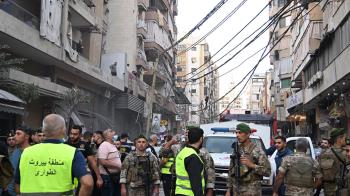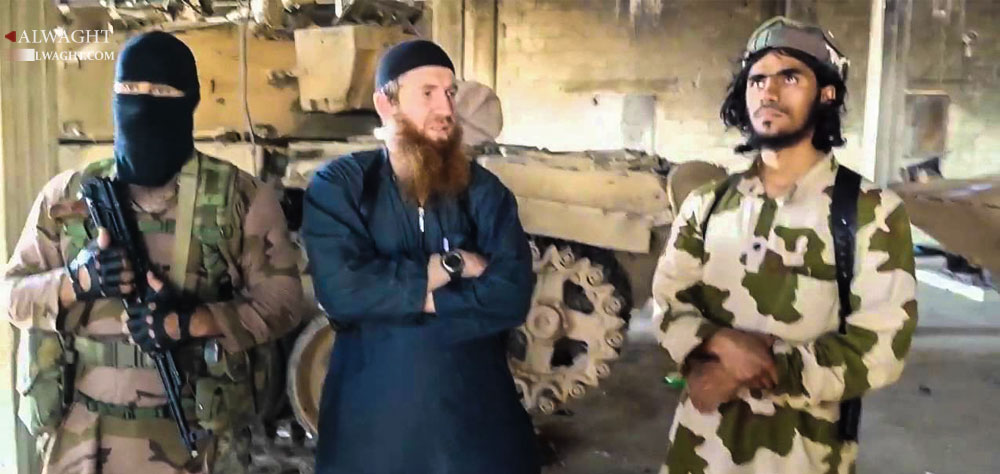Alwaght- The Russian Federal Security Service (FSB) has recently released a report on typological study of the terrorist measures across the Russian Federation, introducing six types of terror acts that are likely to be conducted on the Russian soil. The six types include nationalist, leftist radical, right-wing radical, state-sponsored, religion-motivated, and anarchist terror attacks.
The report adds that the religious terrorists, who mostly seek ideological goals behind their acts of terror, majorly belong to the small religious cults or even mainstream religions. In Russia, the terrorist acts of the Wahhabists and extremist Islamists fall in the category of religion-motivated terror attacks. It can be noted that a majority of the Wahhabist groups observe terrorism as the key instrument to pursue the aimed goals.
Generally, the Wahhabism in Russia over the past years has been associated with separatism and anti-central Russian government fighting. The Wahhabist organizations in the Russian Federation have done their best to fan tensions and chaos across the country. A very important point about this hostility is the war experience that the Russian Wahhabists have obtained from presence in the Syrian and Iraq battlefields as part of terrorist groups. As a result, the fighters who are fighting the central Syrian government in Syria actually pose threats to even their own country’s national security. Moscow grows concerns over their return from the battlefield to Russia and presenting the same threats to home. In fact, the terrorists who come back home bring to the country a mix of terrorist beliefs and battlefield experiences. They have learned how to act in conditions of insurgency and battle. Furthermore, the fighters who come back from Syria to their countries can train their fellow fighters at home. This, in turn, raises a kind of native violence and terrorism in Russia.
The FSB suggested in 2013 that the number of the Russian fighters in Syria was 400, all of them adopting Wahhabist ideologies. This report was issued while in 2012 about 250 of Russian nationals travelled to Syria to join the fighters battling the government of President Bashar al-Assad. The evidences show that the attacks in northern Syria, either in the level of commanders or the fighters, echo a fully Chechenia war styles, and that they happen under direct supervision of the Turkish intelligence agencies. It is not an accident that three Chechens lead battles of Aleppo and Kessab in northwestern Syria. The command was passed from Salahaddin al-Shishani to his deputy Mohammad al-Shishani and then to Abu Musa al-Shishani. Shishani is the Arabic translation of Chechen
Regardless of the statistics and that how many Russian nationals are engaged in fighting in Syria, what is very important in this regard are the reasons and grounds that push the extremists to join the Syrian war and also the consequences of this phenomenon for the future stability and security in Russia. Sooner or later the Syrian crisis ends, but what remains is the terrorism that superficially grew up within this crisis. For sure, the terrorists that return home will try to get toehold among people. Meanwhile, due to the ethnic diversity in the makeup of Russia, the secessionism idea will put an array of challenges ahead of Moscow. Although the ethnic groups are not able to engage in direct confrontation with the central Russian government, they can resort to terrorist actions and other acts of sabotage. For example, in past years, the Chechenia separatism led to direct clashes with Moscow.
Accordingly, the overarching implications of presence of terrorists from Russia in Syria, are that the Russian national security will be challenged. Once the fighters come back home from Syria with big fighting experiences, it will be difficult for Kremlin to maintain them because they get battlefield skills and so can carry out terrorist attacks in Russia, and at the same time can transfer skills to other hostile forces.
This phenomenon for Moscow, specifically in North Caucasus where the security condition is fragile, is a potential threat that can endanger the Russian domestic security. That’s why the Russian government has frequently warned against return of terrorists from Syria to Russia. Kremlin is afraid that people who return home with full battling experiences could join the secessionist movements in North Caucasus, a challenge that will certainly stir instability within the Russian borders, especially that military experience of these terrorists could strengthen the underground Wahhabists groups inside Russia.
North Caucasus is one of Russia’s most unstable regions, always plagued by radicalism and terror attacks. Certainly, if the Islamist movements grow bigger in West Asia, they will sweep through the borders of Russia's republics and Muslim-inhabited regions. In fact, expansion of chaos in West Asia which is an outcome of its developments can give power to the radical Islamists and influence the Islamist movements in Caucasus. We should not forget that backing the extremist Islamists of Caucasus by countries such as the UAE, Saudi Arabia, and Qatar could pose challenges to Russia, especially that earlier in Chechenia war countries like Egypt, Jordan, Syria, and Libya supported Russia but now the Egyptian and Libyan conditions have undergone vast changes and so the pro-Islamist groups states can more influentially affect the Islamists of North Caucasus.
The Russian intelligence service is concerned that Russian fighters in Syria could get even more radical, learn how to make bombs, and when return home conduct terrorist attacks in Russia, having in mind that Russia has a Muslim population of 20 million. So, at the present time, the biggest challenge faced by the Russian security agencies is to decide which one of the fighters returning home from Syria will carry out terrorist attacks in the country. Russian intelligence service is obsessed with the question if all of the Russian fighters involved in Syria battle will pose threat to security in their home country. There are different ways to find answers for that. Some believe that the fighters must be arrested and tried upon their arrival from the battlefield while others suggest that they by themselves pose no perils to the Russian national security, unless they join organizational activity and become seriously risky for Russia.



























